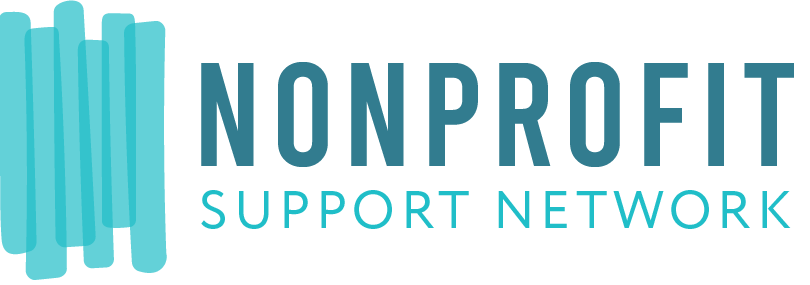Creating a Culture of Employee Engagement and Retention in Nonprofit Organizations
Before a nonprofit can make a genuine impact, the organization and team must thrive. The key to doing this is through employee retention strategies such as professional growth opportunities, employee recognition, fair compensation, and a work-life balance. Some strategies are easy to adapt, while others prevent challenges. A recent study by Nonprofit HR found that 42% of nonprofit leaders expect their employee turnover rates to increase in the next year, and 80% of leaders do not have a retention strategy in place.
A strong employee retention strategy is important. When nonprofit organizations actively work towards retention, employee engagement is increased and employees feel secure in that they are working towards a greater purpose. Organizational success cannot be achieved without dedicated employees. Employee dedication only happens when a number of retention strategies are put in place. Read on for some helpful tips about how to best implement an effective employee retention strategy at your nonprofit organization.
Strong Relationships are Key
Employee retention happens when individuals feel like they are part of a supportive work environment. Open communication, collaboration, and teamwork create this type of environment that leads employees to keep wanting to show up and give their best. A blog from DonorBox found that a supportive work environment is also one where employees’ voices and opinions are heard and valued, and leaders clearly communicate their expectations for their employees. This leads to an environment where strong relationships are formed and trust is built. Another way to strengthen relationships in your organization is to prioritize forming a positive and supportive team culture where everyone feels included. This can be done through events like team socials, holiday parties, and themed days. DonorCompass shares that these events will boost team morale, build the overall team atmosphere, and create shared memories between employees.
Provide Professional Development and Growth Opportunities
Investing in the growth potential of your employees allows them to feel seen and valued in your organization, and that their strengths and skills can be properly utilized. Doing so also allows employees to find career development opportunities that are beyond their current role, and leaves them with a challenge they are excited to conquer.
There are many ways an organization can boost employee growth, but it’s important to find out how employees want to grow and what areas they want to grow in. This could be done through professional development check-ins that help determine how an employee’s current role fits into their long-term career goals and needs. Other opportunities include mentorship programs, workshops and classes, and conferences. Mentorship programs are a helpful tool that allows employees to build connections and trust within their organization, learn from their coworkers, and develop their leadership skills. Training helps employees learn and work on vital skills that are required to grow in their nonprofit roles.
Recognize Employees
Employee retention can happen when employees are recognized for their work and appreciated for their contributions to the organization’s mission. Nonprofit leaders can recognize their employees by choosing an employee of the month or an employee of the week. Managers and leaders should provide regular feedback and praise for a job well done, as this shows employees that you value their contributions and are grateful for their dedication.
Work-Life Balance
Nonprofit employees may be passionate about the communities they serve, but the emotional labor involved in doing so can quickly lead to burnout. Because of this, establishing an organizational culture in your nonprofit that values and implements a work-life balance is significant. In the nonprofit sector, a healthy work-life balance gives employees a sense of value and well-being. Each nonprofit is different in its ability to promote a work-life balance. Possibilities include flexible work schedules, mental health and vacation days, encouraging breaks, and leading by example.
Talk to employees
Nonprofit leaders should allow employees to contribute to the direction the work and the organization is going in. This can be done by listening to and considering the feedback of employees. One helpful feedback mechanism to utilize is a survey. Anonymous surveys help evaluate a nonprofit’s culture honestly and allow employees to reflect on areas of their work experience that could use improvement. Surveys can cover a variety of topics, from engagement to satisfaction, and leadership. An article from LinkedIn for Nonprofits suggests that if surveys are implemented in your organization, it is important to utilize them on a consistent basis. Regularly assessing employee satisfaction, engagement levels, and areas for improvement makes strong employee retention possible. Regular staff meetings where feedback can happen and honest conversations are encouraged to take place.
Organizations are only as good as their employees. That is why a driven employee retention strategy is so critical to the overall health and longevity of an organization's success. Employee retention reduces turnover and the costs associated with it, and increases employee growth and engagement in the workplace over time. Employee retention can only happen when an organization takes time to build strong relationships with their employees, provides professional development and growth opportunities, recognizes their employees for their contributions, strives to give employees a healthy work-life balance, and is always open to feedback. To learn more about retention strategies and other helpful organizational practices, stay tuned for Nonprofit Support Network’s upcoming HR webinar and other HR-related resources.
Meet the Author: Ellie Parkison
Ellie is the Communications and Outreach Intern for Nonprofit Support Network. In her position, Ellie assists with producing social media and blog content, maintaining communication tools, managing events and programs, and researching nonprofit trends and best practices.




